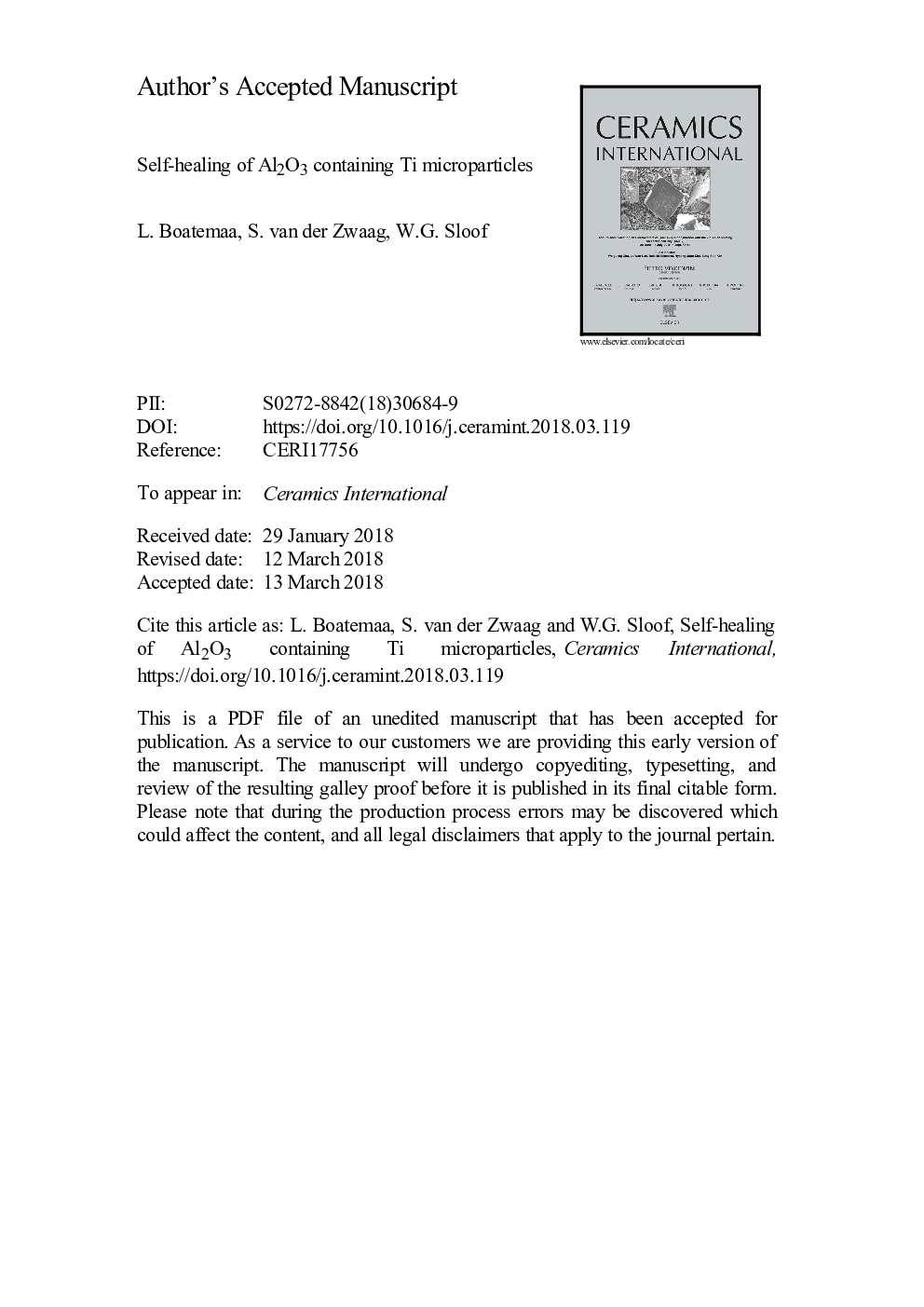| Article ID | Journal | Published Year | Pages | File Type |
|---|---|---|---|---|
| 7886791 | Ceramics International | 2018 | 49 Pages |
Abstract
This work explores the possibility of using embedded micron-sized Ti particles to heal surface cracks in alumina and to unravel the evolution of the crack filling process in case of pure solid-state oxidation reactions. The oxidation kinetics of the Ti particles is studied and the results are applied in a simple model for crack-gap filling. An activation energy of 136â¯kJ/mol is determined for the oxidation of the Ti particles having an average particle size of 10â¯Âµm. The almost fully dense alumina composite containing 10â¯vol% Ti has an indentation fracture resistance of 4.5â¯Â±â¯0.5â¯MPaâ¯m1/2. Crack healing in air is studied at 700, 800 and 900â¯Â°C for 0.5, 1, and 4â¯h and the strength recovered is measured by 4-point bending. The optimum healing condition for full strength recovery is 800â¯Â°C for 1â¯h or 900â¯Â°C for 15â¯min. Crack filling is observed to proceed in three steps i.e., local bonding at the site of an intersected Ti particle, lateral spreading of the oxide and global filling of the crack. It is discovered that, although significant strength recovery can be attained by local bonding of the intersected particles, full crack filling is required to prevent crack initiation from the damaged region upon reloading. The experimental results observed are in good agreement with the predictions of a simple discrete crack filling/healing model.
Related Topics
Physical Sciences and Engineering
Materials Science
Ceramics and Composites
Authors
L. Boatemaa, S. van der Zwaag, W.G. Sloof,
